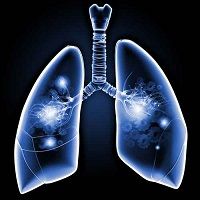Lung Proteins in Smokers Have Unique Patterns
A study analyzing sputum suggests that there may be a framework for changes in the proteins of smokers' lungs, which in turn lead to changes in transcription factors, and eventually to inflammatory mechanisms.

The proteins in the sputum of smokers can function as complex bio-signatures that provide information about the mucin 5AC hypersecretion, airflow obstruction, and emphysema, according to a study performed by James N. Baraniuk, MD, Division of Rheumatology, Immunology and Allergy, Georgetown University, in Washington, DC, and several colleagues. The results of the study were published in the International Journal of COPD on September 15, 2015.
Cigarette smoking can lead to several conditions, including chronic bronchitis, mucus hypersecretion, airflow obstruction, emphysema, and COPD. Each of those conditions is a clinical phenotype, with specific pathophysiological mechanisms; however, those mechanisms are not clearly defined.
The researchers obtained and analyzed induced sputum from several categories of participants: 7 life-long non-smokers, who had never smoked; 13 healthy smokers; 11 chronic bronchitis patients; 15 patients with COPD without significant emphysema; and 10 COPD patients with emphysema and airflow obstruction.
The sputum from each subject was freeze-dried, then reconstituted, and put through analyzed through mass spectrometry. The researchers looked at the abundance of individual proteins, how frequently they were detected, and analyzed the protein network-interaction for each phenotype. They found 203 proteins, but reduced the number to 114 using the National Center for Biotechnology Information gene database, then further reduced the number to be analyzed to the 50 that were detected in at least three specimens.
According to the authors, “Each of the smoker and healthy subject phenotypes had unique patterns of proteins in their induced sputum specimens” which led them to the conclusion that “distinct pathophysiological processes were associated with smoking, mucus hypersecretion, airflow obstruction, and emphysema.”
Although the study included healthy smokers, the researchers noted that they had more goblet-cell MUC5AC expression than the non-smokers. This study suggests that there may be a framework for changes in the proteins of smokers’ lungs, which in turn lead to changes in transcription factors, and eventually to inflammatory mechanisms. The researchers conclude, “Understanding the dynamic progression of these pathological mechanisms may lead to significantly improved diagnostic tools and treatments.”